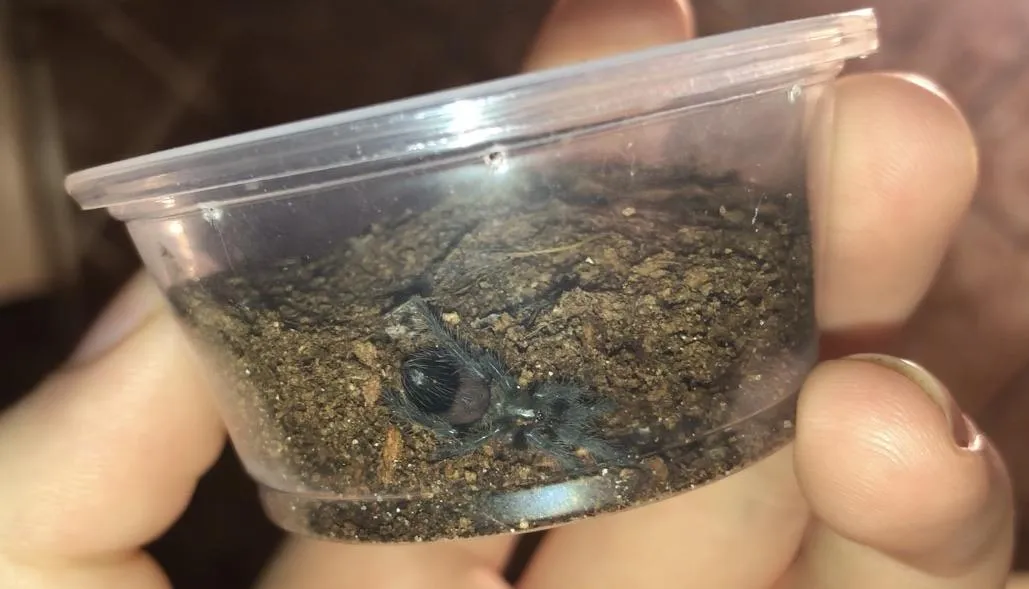Choosing the Right Enclosure for Your Curly Hair Tarantula Sling
Setting up a suitable enclosure is the cornerstone of providing a healthy and happy home for your curly hair tarantula sling. The enclosure should mimic the tarantula’s natural environment as closely as possible, ensuring its well-being and promoting healthy growth. The right setup will not only meet the tarantula’s basic needs but also allow you to observe and enjoy these fascinating creatures. Careful consideration of the enclosure’s size, material, and ventilation is crucial to its success. This guide will take you through all the key aspects of creating the perfect habitat for your tiny tarantula.
Size Matters Determining the Correct Enclosure Size
The size of the enclosure is the first and perhaps most crucial factor. For a curly hair tarantula sling, which is typically very small, starting with an enclosure that is too large can be detrimental. A larger enclosure can make it difficult for the sling to find food, as it may struggle to locate prey. It can also make it harder to maintain the proper humidity and temperature levels that are vital for their survival. Generally, a small deli cup or a clear plastic container with a lid is ideal for slings. The container should be approximately three times the leg span of the tarantula across. This ensures they have enough space to move around and establish a comfortable territory without feeling overwhelmed. As the sling grows, you will need to upgrade to larger enclosures.
Material Preferences Glass, Plastic, or Acrylic?
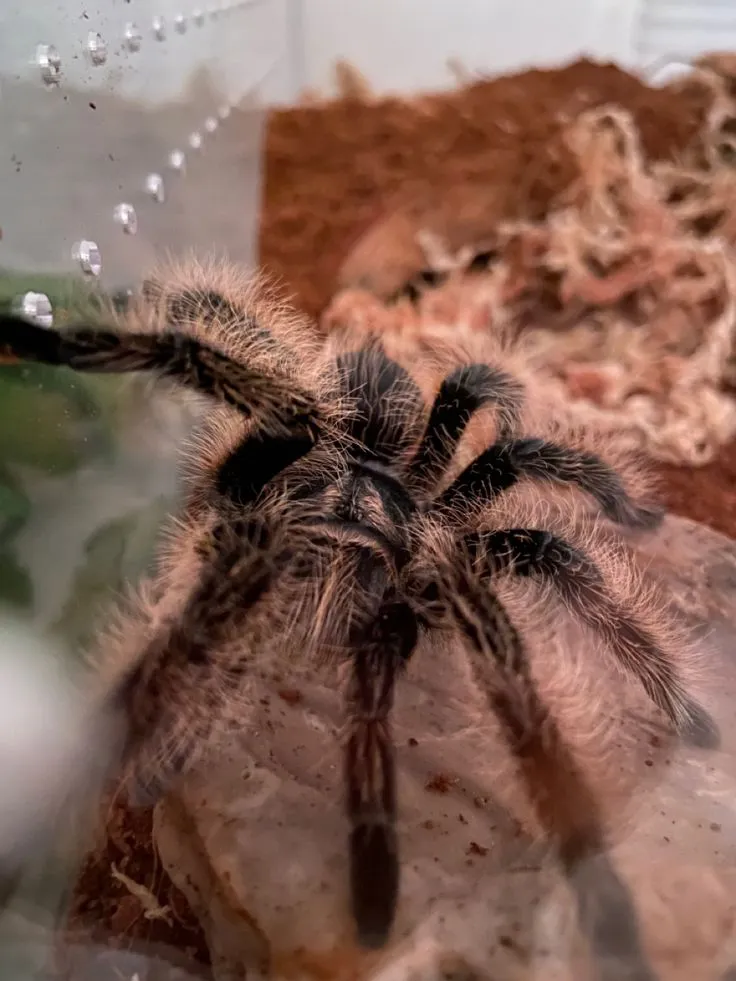
The material of the enclosure is another key consideration. Clear plastic containers are often favored for their affordability, ease of use, and the excellent visibility they provide. They are also lightweight, making them easy to handle during cleaning and maintenance. Glass enclosures, while aesthetically pleasing, can be heavier and more prone to breakage. Acrylic enclosures are another option; they are durable and offer good clarity, but can be more expensive. Whatever material you choose, ensure it is clean, non-toxic, and provides a secure environment for your sling. The key is to choose a material that’s easy to clean and provides good visibility for observation. Plastic enclosures are very suitable for humidity levels and can be easily modified with additional ventilation holes to improve airflow.
Ventilation Essentials for a Healthy Environment
Proper ventilation is essential to prevent mold and mildew growth, and to ensure your tarantula sling has access to fresh air. Adequate airflow helps regulate humidity levels and prevent the buildup of harmful gases. Enclosures should have ventilation holes, preferably on the sides and top, to allow for air circulation. Make sure these holes are small enough to prevent the escape of the sling. The amount of ventilation needed will vary depending on the enclosure’s material and the humidity levels in your home. Regularly inspect the enclosure for any signs of condensation, which may indicate insufficient ventilation. Adjust the ventilation as needed to maintain a balanced environment. A well-ventilated enclosure is key to preventing respiratory issues for your sling.
Substrate Selection for Your Sling
The substrate is the foundation of your curly hair tarantula sling’s habitat, playing a crucial role in maintaining humidity, providing a natural environment, and offering a surface for the tarantula to burrow and explore. The right substrate will not only support the tarantula’s well-being but also enhance the overall aesthetics of the enclosure. Careful selection of the substrate material, depth, and moisture content is crucial for creating a thriving environment for your sling. The substrate should mimic their natural habitat and meet their specific needs.
Ideal Substrate Choices
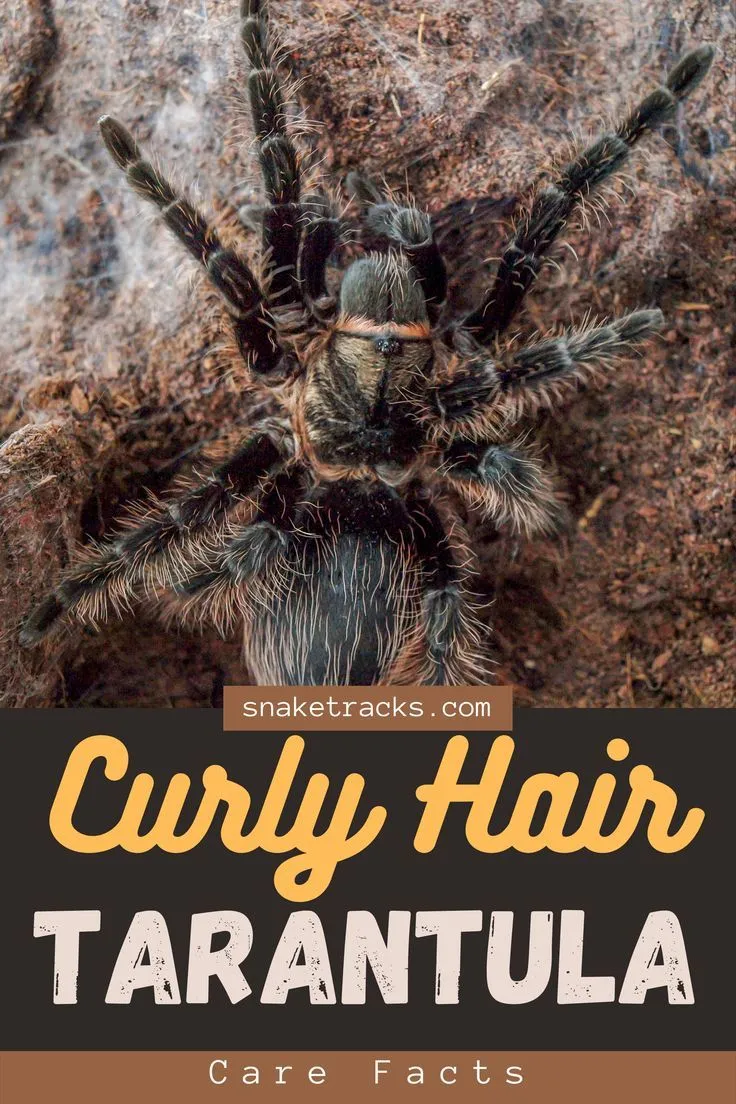
Several substrates are suitable for curly hair tarantula slings, each with its own advantages. A popular and effective choice is a mix of coconut fiber (coco coir) and peat moss. Coco coir is excellent at retaining moisture, which is essential for maintaining the humidity levels that these tarantulas require. Peat moss adds to the moisture retention capabilities and provides a slightly acidic environment, which can help prevent the growth of mold and bacteria. You can also consider using a substrate mix of soil, sand, and leaf litter, which can provide a more naturalistic look and feel. It is crucial to avoid substrates with chemicals, fertilizers, or pesticides, as these can be harmful to your tarantula. The substrate should be clean, non-toxic, and free of any additives.
Substrate Depth and Moisture Control
The depth of the substrate is crucial for providing your tarantula sling with a secure and comfortable environment. For slings, a substrate depth of about 1 to 2 inches is generally sufficient. This allows the tarantula to burrow slightly and feel secure, which is essential for their well-being. The substrate depth may need to be increased slightly as the tarantula grows. Moisture control is achieved by misting the substrate lightly with water, ensuring that it remains slightly damp but not waterlogged. Waterlogged substrate can lead to mold and other harmful conditions. Regularly monitor the substrate’s moisture level and adjust your misting schedule accordingly. Using a hygrometer to measure the humidity levels in the enclosure can also be helpful. Aim for a humidity level of around 60-70% to keep your sling healthy.
Providing Proper Humidity Levels
Maintaining the appropriate humidity levels is a critical factor in the health and well-being of your curly hair tarantula sling. These tarantulas thrive in a moderately humid environment, typically requiring humidity levels between 60% and 70%. To achieve and maintain these levels, regular misting of the substrate is essential. Use a spray bottle with distilled or dechlorinated water to lightly mist the substrate, avoiding oversaturating it. Ventilation also plays a crucial role in humidity control; ensuring proper airflow prevents the buildup of excessive moisture. Using a hygrometer can help you monitor the humidity levels accurately and adjust your misting schedule accordingly. Providing a shallow water dish also contributes to humidity, especially in drier climates. Remember that maintaining consistent humidity is crucial for your sling’s molting process and overall health.
Essential Accessories for a Thriving Sling
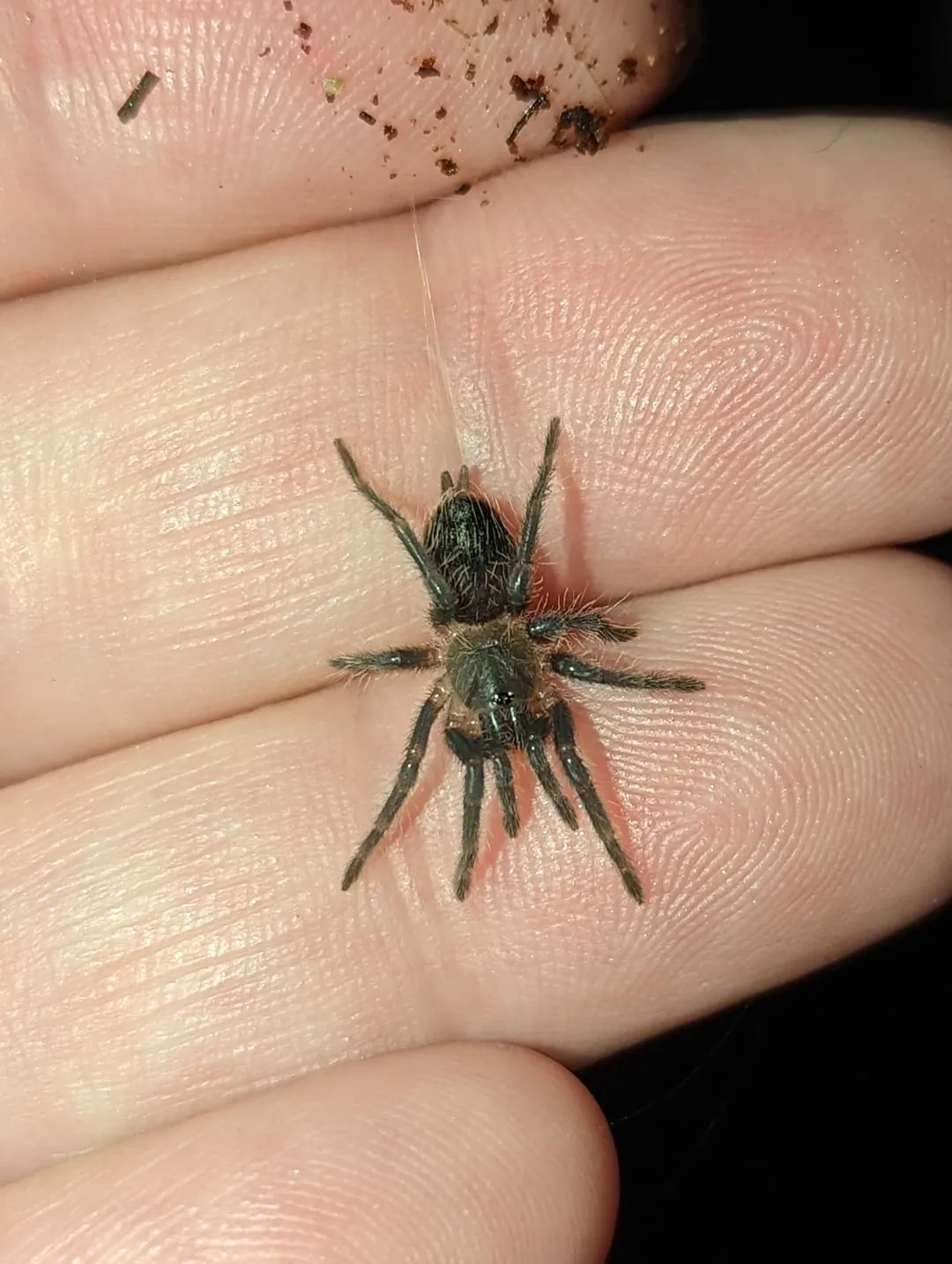
Adding the right accessories to your curly hair tarantula sling’s enclosure is essential for providing enrichment, promoting natural behaviors, and enhancing their overall well-being. Accessories mimic their natural habitat and provide opportunities for exploration, hiding, and hydration. Carefully selecting the right accessories will make your sling’s enclosure a comfortable and stimulating environment. These additions not only contribute to the tarantula’s physical and mental health, but also add to the aesthetic appeal of the enclosure.
Water Source Options
Providing a clean and accessible water source is vital for keeping your curly hair tarantula sling hydrated. A small, shallow water dish is ideal for slings, as it minimizes the risk of drowning. Ensure the dish is shallow enough for the sling to easily climb in and out and is securely placed to prevent spills. You can use a bottle cap, a small plastic dish, or a commercial water dish designed for invertebrates. Fill the dish with fresh, clean water and replace it regularly, preferably every one to two days, to prevent the growth of bacteria or mold. Another option is to provide moisture through regular misting of the enclosure, but this should not replace a water source. Having a consistent water source ensures the tarantula stays hydrated and can molt successfully.
Hiding Spots and Enrichment
Curly hair tarantulas are burrowing species, so providing them with a secure hiding place is essential for their well-being. A small piece of cork bark, a half-buried terracotta pot, or a commercially available hide designed for invertebrates are excellent choices. The hide should be appropriately sized for the sling, allowing it to feel secure and protected. It is crucial to provide multiple hiding places so the tarantula has options for retreating from view. Besides hiding spots, adding some form of enrichment to the enclosure can stimulate natural behaviors and prevent boredom. You could place a few small, non-toxic decorations, such as small plastic plants or rocks, to add visual interest and give the tarantula something to explore. Make sure any decorations you use are safe and do not pose a risk to the tarantula.
Temperature Regulation for Optimal Growth
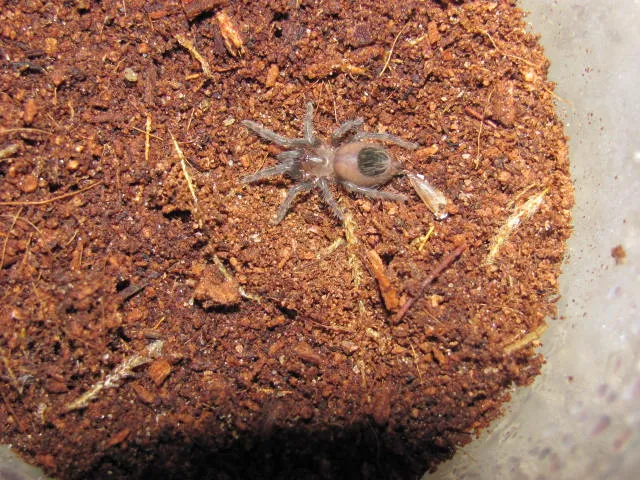
Temperature plays a critical role in the health, growth, and activity level of your curly hair tarantula sling. As ectothermic creatures, tarantulas rely on external heat sources to regulate their body temperature. Maintaining the proper temperature range within the enclosure is essential to ensure your sling thrives. Too cold, and the tarantula will become sluggish and may stop eating; too hot, and it can lead to dehydration and stress. Monitoring and maintaining the optimal temperature range is crucial for supporting their metabolism, molting process, and overall well-being. A well-regulated temperature environment is the key to a healthy and thriving tarantula.
Maintaining the Right Temperature Range
Curly hair tarantula slings generally thrive in a temperature range of 75 to 80°F (24 to 27°C). It is important to monitor the temperature regularly using a reliable thermometer placed inside the enclosure. The thermometer should be positioned in a way that provides an accurate reading of the enclosure’s overall temperature, not just near the heat source. Avoid placing the enclosure in direct sunlight or near drafts, as this can cause temperature fluctuations. If your home’s ambient temperature is consistently below this range, you may need to provide supplemental heating. Remember that sudden or extreme temperature changes can be harmful, so maintaining a stable environment is key. Always check the temperature before feeding or handling your sling.
Heating Options for Sling Enclosures
If supplemental heating is needed, several options are available. The most common and safest method is to use a heat mat placed on the side or back of the enclosure. Always use a thermostat to regulate the heat mat and prevent overheating. Never place a heat mat directly under the enclosure, as this can lead to the tarantula burrowing to the warmer substrate and potentially overheating. Ceramic heat emitters (CHEs) are another option, particularly for larger enclosures, but they require careful monitoring to avoid excessive heat. Incandescent light bulbs can also be used, but they should be used with caution, as they can dry out the enclosure and require careful positioning to avoid overheating. Regardless of the heating method used, a thermometer is critical for monitoring the temperature inside the enclosure. Always prioritize safety and the well-being of your sling when choosing and using heat sources.
Feeding Your Curly Hair Tarantula Sling
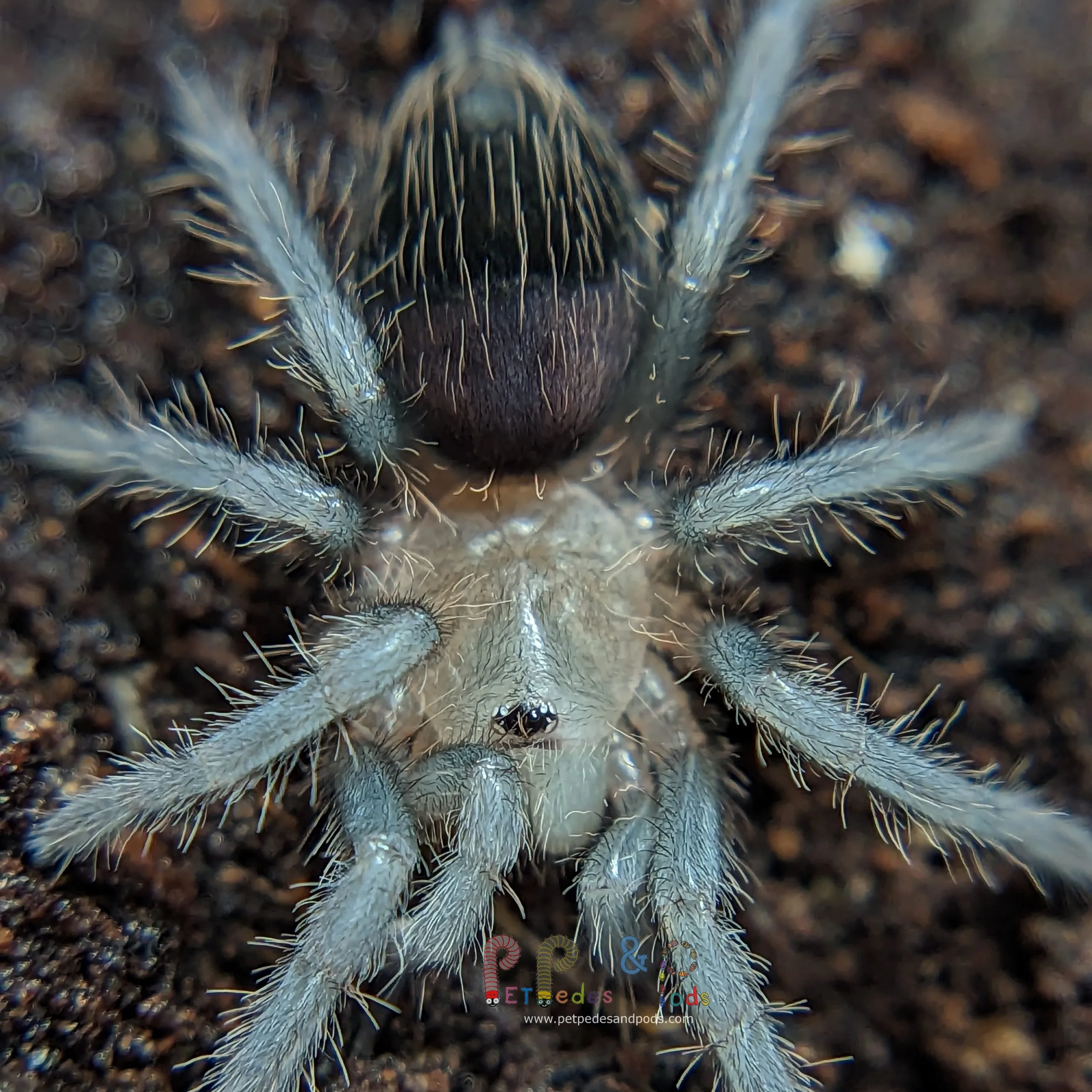
Providing a proper diet is essential for the health and growth of your curly hair tarantula sling. The right food, frequency, and feeding techniques will ensure your sling gets the necessary nutrients to thrive. The diet should be appropriate for the size of the tarantula and easy to access. Proper feeding not only supports their physical development but also contributes to their overall well-being. Learning about the right food choices, feeding frequency, and techniques is crucial for all tarantula keepers.
Appropriate Food Choices and Sizes
Curly hair tarantula slings primarily eat live insects, such as flightless fruit flies, small crickets, or pinhead mealworms. The size of the prey is crucial; it should be no larger than the tarantula’s abdomen, so it does not overwhelm them. Flightless fruit flies are a suitable option for very small slings because they are easy to catch and provide essential nutrients. As the sling grows, you can gradually introduce small crickets or mealworms. Always ensure the prey is healthy and free of pesticides. Before feeding, you may consider dusting the insects with a calcium and vitamin D3 supplement to enhance their nutritional value. Never feed your tarantula insects from your yard, as they could be exposed to pesticides or parasites that could be harmful. Choose feeders from a reputable source.
Feeding Frequency and Techniques
The feeding frequency for a curly hair tarantula sling typically ranges from once or twice a week. The feeding schedule should be adjusted based on the sling’s size, appetite, and growth rate. Observe your sling closely to gauge its feeding habits. If it consistently refuses food, the frequency might be too high. On the other hand, if it appears hungry and is always on the hunt, you might need to feed it more often. When feeding, drop the live prey into the enclosure and allow the tarantula to hunt. Remove any uneaten prey after 24 hours to prevent the insects from stressing the tarantula or potentially harming it. Ensure that the prey is alive and active when you offer it to your sling. Monitor the sling’s abdomen; it should be rounded after feeding. Adjust the feeding schedule as needed based on the tarantula’s molting cycle. Tarantulas typically stop eating before they molt.
Monitoring and Maintenance of the Enclosure
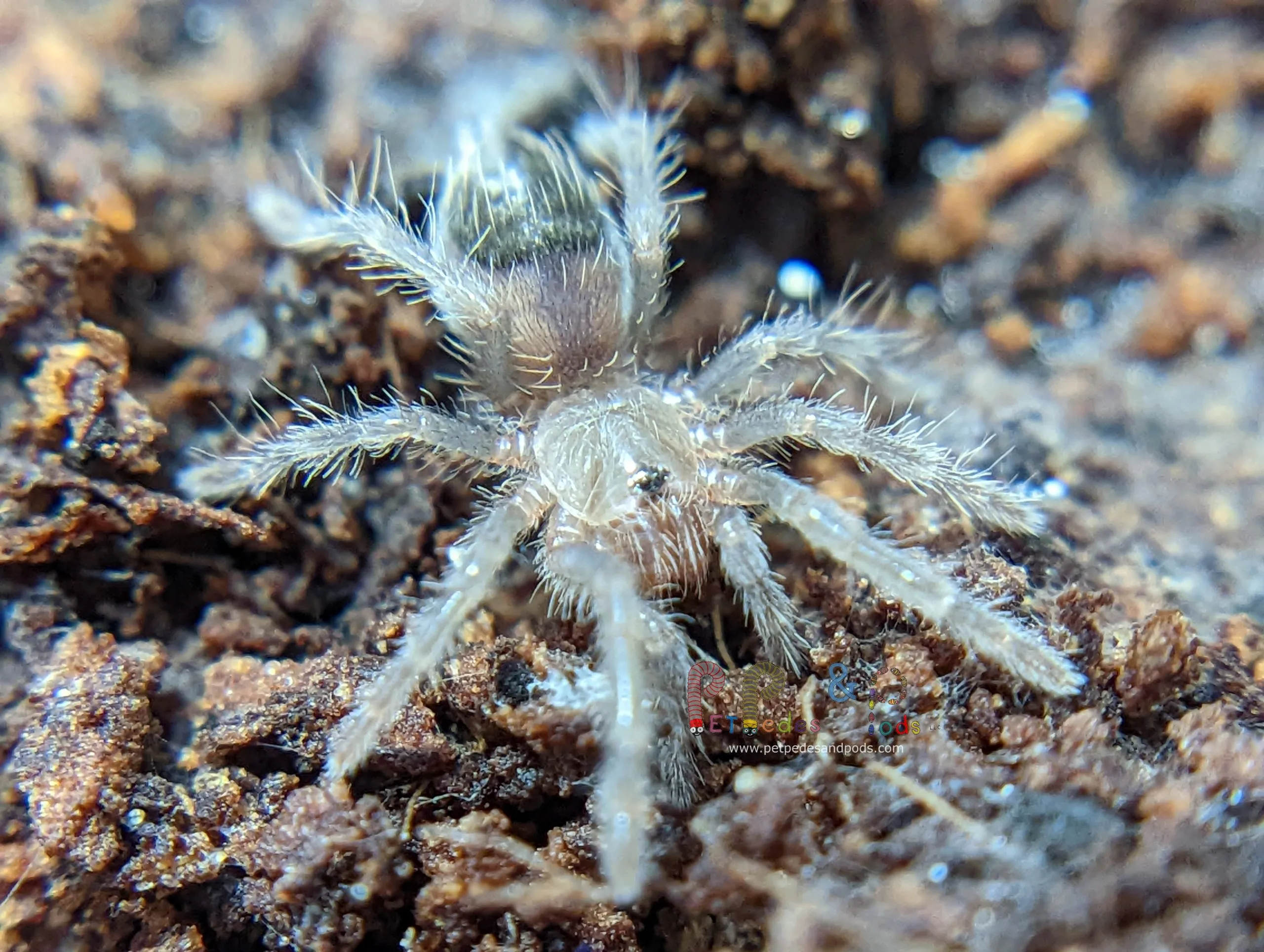
Regular monitoring and maintenance are crucial for maintaining a healthy and thriving environment for your curly hair tarantula sling. Consistent care not only ensures the tarantula’s well-being but also helps you detect any potential problems early on. Implementing a routine of cleaning, spot-cleaning, and regular inspections will keep the enclosure in optimal condition. The more you pay attention to detail, the more you’ll enjoy watching your tarantula grow and thrive.
Cleaning and Spot-Cleaning Procedures
Cleaning the enclosure is a crucial part of maintenance, ensuring that it remains hygienic and free from harmful bacteria and mold. Spot-cleaning should be done regularly, usually once or twice a week. This involves removing any uneaten food, feces, and any other debris from the enclosure. For slings, this usually entails using a small pair of tongs or a soft brush to carefully remove waste. A full enclosure cleaning should be performed as needed, typically every few months, depending on the size of the enclosure. During a full cleaning, remove the tarantula (safely into another container), remove all substrate, clean the enclosure thoroughly with warm water and a mild, unscented soap (rinse well!), and replace the substrate. Always allow the enclosure to dry completely before returning the tarantula. Using a clean, new substrate is very important for maintaining a healthy environment for your sling.
Regular Inspections for Health and Well-being
Regular inspections are essential for monitoring the health and well-being of your curly hair tarantula sling. These inspections involve observing the tarantula’s behavior, appearance, and the overall condition of the enclosure. Look for signs of illness, such as lethargy, loss of appetite, or any unusual changes in behavior. Inspect the tarantula’s body for injuries or parasites. Ensure that the enclosure’s humidity and temperature levels are within the appropriate range. Check the substrate for mold or excessive moisture, which could indicate poor ventilation. During inspections, you should also monitor the tarantula’s abdomen to ensure it is well-fed and healthy. These regular checkups help you detect and address potential problems early on, ensuring that your tarantula remains healthy and happy. Observe your sling regularly to be aware of its usual behaviors, making it easier to spot any anomalies.
